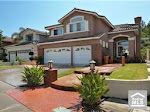Double Dip or Double Your Money?
Last week, MacroMarkets LLC announced the results of the March 2011 Home Price Expectations Survey, compiled from 111 responses of a diverse group of economists, real estate experts and investment and market strategists. Many media sources reported on the survey’s comment about a projected ‘double dip’ in prices. What the media didn’t aggressively cover was the other projection in this same report. Today we want to shed light on both portions.
Double Dip
There is no doubt the survey looked negatively on house prices through the rest of 2011. Robert Shiller, MacroMarkets co-founder and chief economist said:
“Overall, the sentiment among our expert panel regarding the U.S. housing market outlook continues to deteriorate. Now they are expecting only a weak recovery, and even that is not until 2013. This uninspiring view must be influenced by the persistently weak market fundamentals – high unemployment, supply overhang, an unabated foreclosure crisis, and constrained mortgage credit.”
Terry Loebs, MacroMarkets managing director commented on the dreaded ‘double dip’.
“Many more experts are now projecting a double-dip after witnessing the double-dead cat bounce that came in the wake of expired government stimulus programs. In December, only 15% of our panelists were projecting that a new post-crash low would materialize for national home prices. Now, just three months later, almost 50% foresee a double-dip happening this year, and not a single panelist expects national home prices to recover to the pre-bubble trend in the coming 5 years.”
However, the longer term view of home prices was much more optimistic.
Double Your Money
The experts projected that by the end of 2015 home prices would attain a cumulative level of appreciation of almost 10% (see chart below from the report).
This means, if you purchased a house today with a 10% cash down payment, you could double your cash in five years; even taking the projected double dip into consideration.
Shiller also noted that there continues to be significant dispersion among the panelists regarding their individual home price forecasts:
“A few respondents do see a real recovery, predicting prices up 20% or so by 2015.”
If that happens, you would have TRIPLED your cash.
Bottom Line
If you are thinking of selling in the next 12 months, you should do it before the projected ‘double dip’. If you are thinking of buying and you plan to live in the home for at least five years, your financial investment will be fine.








































































































